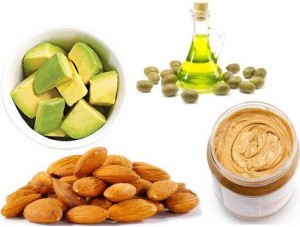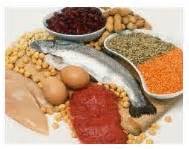Nutrition and Chronic Disease
Well, we’ve spent some time on the health issues of obesity and cardiovascular workings and I thought it would be interesting to take a look at some basic nutrition facts as they may relate to chronic diseases before we move on to other chronic diseases.
No matter what you watch, where you look, or what grocery line you stand in, you will see something about a new diet or exercise fad “guaranteed” that make you the slim, trim person you always wanted to see looking back at you from the mirror – sometimes without making any changes to your diet or doing any exercise! But, what about basic nutrition – the nuts and bolts of a healthy eating plan? Let’s not worry, for this post anyway, about losing weight, lowering our risk of heart disease, or anything else. Let’s just see what a real food, healthy eating plan might look like. Might be kind of surprising and fun!
Once again, I turned to my trusty research source, the CDC, and found a page entitled “Nutrition for Everyone” where the first good news I found is that I am not crazy! It states that it’s true that the fields of diet and nutrition are areas of evolving research. To evolve means to develop gradually so it seems that the “rules” of nutrition we’ve had for decades are slowly changing and that may be causing some confusion – it does for me anyway. I go to the grocery store intent on making good choices, both nutritionally and financially, well equipped with my list. Rarely do I succeed in reaching my goal – there are so many things that indicate they are healthy choices and they look like they would taste delicious, be easy to prepare and not take all evening to do so – of course they are either pretty expensive or somewhat falsely advertised as “healthy” – which I don’t find out until I pay and get home – or they don’t taste all that good and end up being thrown out in a week or so. The other scenario is I start out really good the first few days after shopping, ignoring how much I’ve spent, eat healthily and feel good about that, get to the bottom of the fresh fruits and vegetables several days before the next payday, resort to my old habits of high fat, high sugar and salt-laden staples in the cupboard and defeat the purpose – a no win situation! The information I found states that by knowing the basics, you will be better equipped to sort through the nutrition research and dietary advice, so let’s check out the basics.
FOOD GROUPS
There are five basic food groups. Foods are grouped together when they share nutritional properties. By understanding the basic food groups, it’s easier to plan a healthy daily diet.
Water: Water is involved in every function of the body. It’s in every cell, tissue and organ of the body and getting enough water is very important to your health. Water helps your body:
- Keep its temperature normal
- Lubricates and cushions the joints
- Protects the spinal cord and other sensitive tissues
- Gets rid of wastes through urination, perspiration and bowel movements.
Water needs are met mostly through the water and other beverages you drink but you also get some through the foods you eat, such as soups and broths. Celery, tomatoes, oranges and melons also have a high water content.
Keeping hydrated is important to replace what your body loses through everyday functions like sweating, going to the bathroom and even when you exhale, so drink 1/2 your weight in water or juices daily.
Dietary Fat: Fats are essential for normal body function, but some fats are better for you than others. Trans fats, saturated fats and cholesterol are less healthy than polyunsaturated and monounsaturated fats.
The Dietary Guidelines for Americans 2010 recommend that Americans:
- Consume less than 10% of calories from saturated fats
- Replace solid fats with oils when possible
- Limit foods that contain synthetic sources of trans fatty acids (such as hydrogenated oils) and keep total fatty acid consumption as low as possible.
- Eat fewer than 300 mg. of dietary cholesterol per day.
- Reduce the intake of calories from solid fats.
The follow chart shows the total daily fat intake by age:
| Age Group | Total Fat Limits |
| Children ages 2 to 3 | 30% to 40% of total calories |
| Children and adolescents ages 4 to 18 | 25% to 35% of total calories |
| Adults, ages 19 and older | 20% to 35% of total calories |
For a personalized plan that will provide your daily allowance of oils and solid fats, based on your age, gender, height, and physical activity level, go to Choose My Plate.gov.
Carbohydrates: We hear a lot about low carb diets like the Atkins diet or the South Beach Diet, but what, exactly are carbohydrates and how do they fit in a healthy diet?
Your body uses carbs to make glucose, which is the fuel that gives you energy and helps keep everything going. You find carbohydrates in:
- Fruits
- Vegetables
- Breads, cereals and other grains
- Milk and milk products
- Foods containing added sugars (cakes, cookies, and beverages)
Healthier foods higher in carbohydrates include ones that provide dietary fiber and whole grains as well as those without added sugars. Sodas and candies are foods higher in carbohydrates and also contain added sugars but they just add extra calories and not many nutrients to your diet.
There are two types of carbohydrates:
- Complex carbohydrates
- Simple carbohydrates
Complex carbohydrates include starch and dietary fiber. Starch must be broken down through digestion before your body can use it as a glucose source. Starch is in certain vegetables, as well as breads, cereals and grains. Dietary fiber is in vegetables, fruits and whole grain foods.
Dietary fiber is either soluble or insoluble.
Soluble fiber is found in:
- Oatmeal
- Oat bran
- Nuts and seeds
- Most fruits
- Dry beans and peas
Insoluble fiber is found in:
- Whole wheat bread
- Barley
- Brown rice
- Couscous
- Bulgur or whole grain cereals
- Wheat bran
- Seeds
- Most vegetables
- Fruits
Most Americans under consume dietary fiber. It is recommended that you get 14 grams of dietary fiber for every 1,000 calories that you consume each day. Visit Food Plans @ MyPlate.gov to find out how many calories you need each day.
Whole grains are a good source of fiber and nutrients. Whole grains refer to grains that have all of the parts of the grain seed, also called the kernel. These parts of the kernel are called the bran, the germ and the endosperm.
When whole grains are processed, some of the dietary fiber and other important nutrients are removed. A processed grain is called a “refined” grain.
Some refined grain products have key nutrients, such as folic acid and iron, removed during the initial processing, added back in. These are called enriched grains. White rice and white bread are enriched grain products.
Some enriched grain foods have extra nutrients added, these are called fortified grains.
Avoiding added sugars: Look for these ingredients as added sugars:
|
|
If you see any of these in the ingredients list, you know the food has added sugars. The closer to the top of the list, the more of that sugar is in the food.
PROTEIN
 Proteins are a part of every cell, tissue and organ in our bodies and they are constantly being broken down and replaced. The protein in the foods we eat is digested into amino acids that are later used to replace these proteins in our bodies.
Proteins are a part of every cell, tissue and organ in our bodies and they are constantly being broken down and replaced. The protein in the foods we eat is digested into amino acids that are later used to replace these proteins in our bodies.
Protein is found in the following foods:
- Meats, poultry, and fish
- Legumes (dry beans and peas)
- Tofu
- Eggs
- Nuts and seeds
- Grains, some vegetables, and some fruits (these provide only small amounts of protein relative to other sources.)
Proteins are made up of amino acids. Think of amino acids as the building blocks. There are 20 different amino acids that join together to make all types of protein. Some of these amino acids can’t be made by our bodies, so these are known as essential amino acids. It’s essential that our diet provide these. In the diet, protein sources are labeled according to how many of the essential amino acids they provide:
- A complete protein source in one that provides all of the essential amino acids. You may also hear these sources called high quality proteins. Animal based foods; for example, meat, poultry, fish, milk, eggs, and cheese are considered complete protein sources.
- An incomplete protein source is one that is low in one or more of the essential amino acids. Complementary proteins are two or more incomplete protein sources that together provide adequate amounts of all the essential amino acids. For example, rice contains low amounts of certain essential amino acids; however, these same essential amino acids are found in greater amounts in dry beans. Similarly, dry beans contain lower amounts of other essential amino acids that can be found in larger amounts in rice. Together, these two foods can provide adequate amounts of all the essential amino acids the body needs.
|
Recommended Dietary Allowances (RDA) of Protein by age group |
|
| Grams of protein needed each day | |
|
Children ages 1 – 3 |
13 |
|
Children ages 4 – 8 |
19 |
|
Girls 9 – 13 |
34 |
|
Girls 14 – 18 |
46 |
|
Boys 14 – 18 |
52 |
|
Women ages 19 – 70+ |
46 |
|
Men 19 – 70+ |
56 |
VITAMINS AND MINERALS
 Vitamins are organic substances (made by plants or animals), minerals are inorganic elements that come from the earth; (soil and water) and are absorbed by plants. Animals and humans absorb minerals from the plants they eat. Vitamins and minerals are nutrients that your body needs to grow and develop normally.
Vitamins are organic substances (made by plants or animals), minerals are inorganic elements that come from the earth; (soil and water) and are absorbed by plants. Animals and humans absorb minerals from the plants they eat. Vitamins and minerals are nutrients that your body needs to grow and develop normally.
Vitamins and minerals have a unique role to play in maintaining your health. For example, Vitamin D helps your body absorb the amount of calcium (a mineral) it needs to form strong bones. A deficiency of Vitamin D can result in a disease called rickets, which is a softening of the bones caused by the bodies’ inability to absorb the mineral calcium. The body cannot produce calcium therefore it must be absorbed. The best way to get enough vitamins is to eat a balanced diet with a variety of foods.
FRUITS AND VEGETABLES
Did you hear the phrase “Eat your fruits and vegetables!” many times in childhood? Research shows why it is good advice.
- Healthy diets rich in fruits and vegetables may reduce the risk of cancer and other chronic diseases.
- Most fruits and vegetables are naturally low in fat and calories and are filling.
If you are interested in calculating your fruit and vegetable recommendations based on your caloric needs for your age, sex and activity level, visit this Fruit and Vegetable Calculator. If you would like to know whether fruits and vegetables can help you manage your weight, look for the brochure on this page as well where you can learn about their role.
In my next blog post I will be looking some interesting facts about stroke.
To your good health,
Barb



